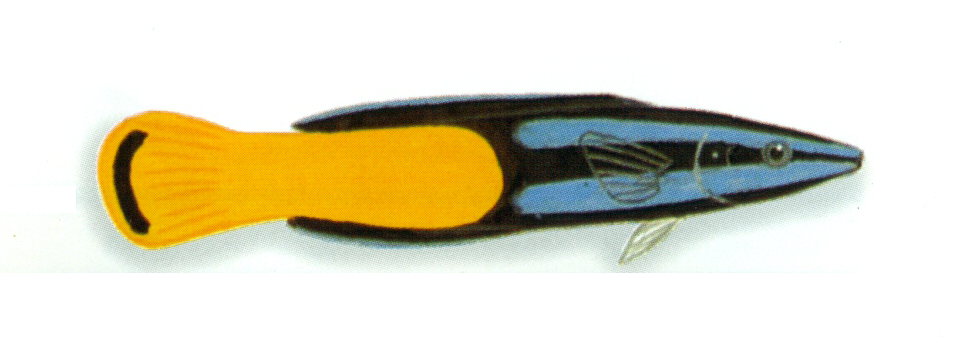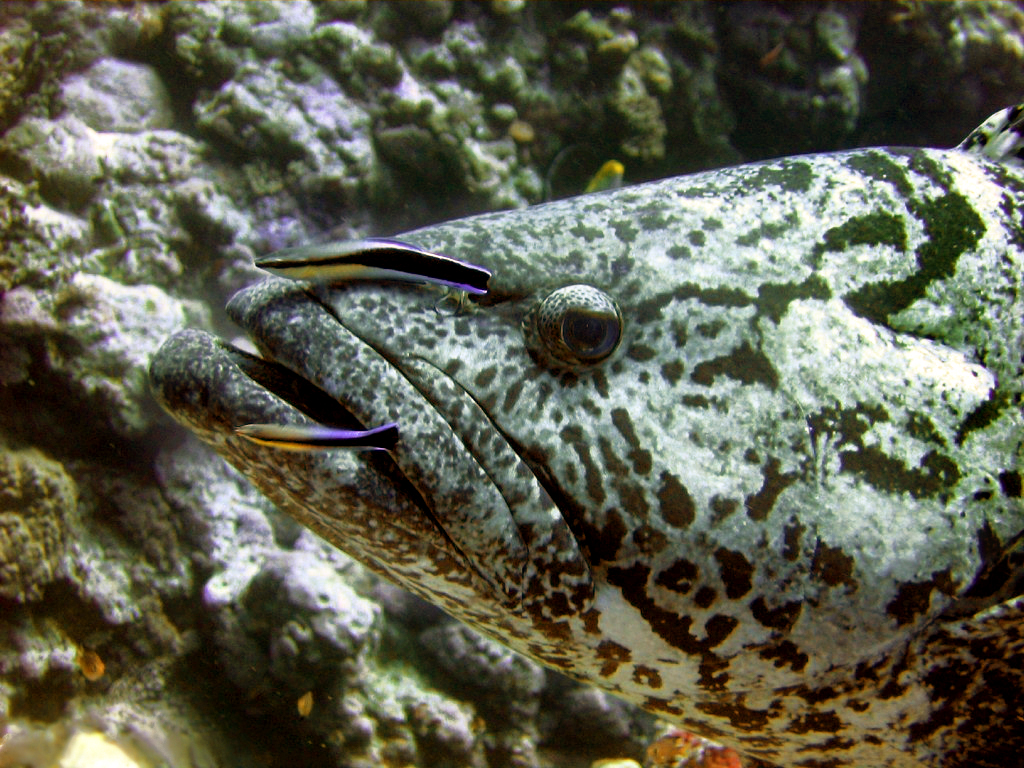|
Labroides
''Labroides'' is a genus of wrasses native to the Indian and Pacific Oceans. This genus is collectively known as cleaner wrasses, and its species are cleaner fish. Species The currently recognized species in this genus are: * ''Labroides bicolor'' Fowler & B. A. Bean, 1928 (bicolor cleaner wrasse) * ''Labroides dimidiatus'' (Valenciennes, 1839) (bluestreak cleaner wrasse) * '' Labroides pectoralis'' J. E. Randall & V. G. Springer, 1975 (blackspot cleaner wrasse) * ''Labroides phthirophagus The Hawaiian cleaner wrasse or golden cleaner wrasse (''Labroides phthirophagus''), is a species of wrasse (genus ''Labroides'') found in the waters surrounding the Hawaiian Islands. The fish is endemism, endemic to Hawaii. These cleaner fish inh ...'' J. E. Randall, 1958 (Hawaiian cleaner wrasse) * '' Labroides rubrolabiatus'' J. E. Randall, 1958 (redlip cleaner wrasse) References Labridae Marine fish genera Taxa named by Pieter Bleeker {{Labridae-stub ... [...More Info...] [...Related Items...] OR: [Wikipedia] [Google] [Baidu] |
Labroides Dimidiatus
The bluestreak cleaner wrasse, ''Labroides dimidiatus'', is one of several species of cleaner wrasses found on coral reefs from Eastern Africa and the Red Sea to French Polynesia. Like other cleaner wrasses, it eats parasites and dead tissue off larger fishes' skin in a mutualistic relationship that provides food and protection for the wrasse, and considerable health benefits for the other fishes. Description This is a small wrasse, averaging 10 cm long (14 cm max). It can be recognized thanks to a wide longitudinal black stripe running along the side and eye; the back and the stomach are white (sometimes slightly yellowish). This white part changes to a bright blue on the front of the animal, while the black band widens at the tail. The young are black with an electric blue line. A genetic analysis of '' L. dimidiatus'' revealed the population fell into two monophyletic clades, with Indian Ocean populations generally having different stripe widths to western Pacifi ... [...More Info...] [...Related Items...] OR: [Wikipedia] [Google] [Baidu] |
Labroides Bicolor
''Labroides bicolor'' is a species of wrasse endemic to the Indo-Pacific, Indian Ocean and Pacific Ocean and is known by various names including bicolor cleanerfish, bicolor cleaner wrasse, bicolored cleaner wrasse, bicolour cleaner wrasse, cleaner wrasse, two-colour cleaner wrasse and yellow diesel wrasse. Description Although the IUCN said both males and females are not dimorphic and have the same color pattern, other sources say the male is black with light color in the back of the body and the female is gray with black while the juvenile is yellow and black. Distribution and population The countries that it occurs includes American Samoa, Australia, British Indian Ocean Territory, China, Christmas Island, Cocos Islands, Comoros, Cook Islands, Fiji, French Polynesia, Guam, India, Indonesia, Japan, Kenya, Kiribati, Madagascar, Malaysia, Maldives, Marshall Islands, Mauritius, Mayotte, Micronesia, Mozambique, Myanmar, Nauru, New Caledonia, Niue, Northern Mariana Islands, Oman, P ... [...More Info...] [...Related Items...] OR: [Wikipedia] [Google] [Baidu] |
Labroides Bicolor En Train De Déparasiter Mulloidichthys Flavolineatus
''Labroides'' is a genus of wrasses native to the Indian and Pacific Oceans. This genus is collectively known as cleaner wrasses, and its species are cleaner fish. Species The currently recognized species in this genus are: * ''Labroides bicolor'' Fowler & B. A. Bean, 1928 (bicolor cleaner wrasse) * ''Labroides dimidiatus'' (Valenciennes, 1839) (bluestreak cleaner wrasse) * '' Labroides pectoralis'' J. E. Randall & V. G. Springer, 1975 (blackspot cleaner wrasse) * ''Labroides phthirophagus The Hawaiian cleaner wrasse or golden cleaner wrasse (''Labroides phthirophagus''), is a species of wrasse (genus ''Labroides'') found in the waters surrounding the Hawaiian Islands. The fish is endemism, endemic to Hawaii. These cleaner fish inh ...'' J. E. Randall, 1958 (Hawaiian cleaner wrasse) * '' Labroides rubrolabiatus'' J. E. Randall, 1958 (redlip cleaner wrasse) References Labridae Marine fish genera Taxa named by Pieter Bleeker {{Labridae-stub ... [...More Info...] [...Related Items...] OR: [Wikipedia] [Google] [Baidu] |
Labroides Pectoralis
''Labroides'' is a genus of wrasses native to the Indian and Pacific Oceans. This genus is collectively known as cleaner wrasses, and its species are cleaner fish. Species The currently recognized species in this genus are: * ''Labroides bicolor'' Fowler & B. A. Bean, 1928 (bicolor cleaner wrasse) * ''Labroides dimidiatus'' (Valenciennes Valenciennes (, also , , ; nl, label=also Dutch, Valencijn; pcd, Valincyinnes or ; la, Valentianae) is a commune in the Nord department, Hauts-de-France, France. It lies on the Scheldt () river. Although the city and region experienced a ..., 1839) (bluestreak cleaner wrasse) * '' Labroides pectoralis'' J. E. Randall & V. G. Springer, 1975 (blackspot cleaner wrasse) * '' Labroides phthirophagus'' J. E. Randall, 1958 (Hawaiian cleaner wrasse) * '' Labroides rubrolabiatus'' J. E. Randall, 1958 (redlip cleaner wrasse) References Labridae Marine fish genera Taxa named by Pieter Bleeker {{Labridae-stub ... [...More Info...] [...Related Items...] OR: [Wikipedia] [Google] [Baidu] |
Labroides
''Labroides'' is a genus of wrasses native to the Indian and Pacific Oceans. This genus is collectively known as cleaner wrasses, and its species are cleaner fish. Species The currently recognized species in this genus are: * ''Labroides bicolor'' Fowler & B. A. Bean, 1928 (bicolor cleaner wrasse) * ''Labroides dimidiatus'' (Valenciennes, 1839) (bluestreak cleaner wrasse) * '' Labroides pectoralis'' J. E. Randall & V. G. Springer, 1975 (blackspot cleaner wrasse) * ''Labroides phthirophagus The Hawaiian cleaner wrasse or golden cleaner wrasse (''Labroides phthirophagus''), is a species of wrasse (genus ''Labroides'') found in the waters surrounding the Hawaiian Islands. The fish is endemism, endemic to Hawaii. These cleaner fish inh ...'' J. E. Randall, 1958 (Hawaiian cleaner wrasse) * '' Labroides rubrolabiatus'' J. E. Randall, 1958 (redlip cleaner wrasse) References Labridae Marine fish genera Taxa named by Pieter Bleeker {{Labridae-stub ... [...More Info...] [...Related Items...] OR: [Wikipedia] [Google] [Baidu] |
Labroides Rubrolabiatus
''Labroides'' is a genus of wrasses native to the Indian and Pacific Oceans. This genus is collectively known as cleaner wrasses, and its species are cleaner fish. Species The currently recognized species in this genus are: * ''Labroides bicolor'' Fowler & B. A. Bean, 1928 (bicolor cleaner wrasse) * ''Labroides dimidiatus'' (Valenciennes, 1839) (bluestreak cleaner wrasse) * ''Labroides pectoralis'' J. E. Randall & V. G. Springer, 1975 (blackspot cleaner wrasse) * ''Labroides phthirophagus The Hawaiian cleaner wrasse or golden cleaner wrasse (''Labroides phthirophagus''), is a species of wrasse (genus ''Labroides'') found in the waters surrounding the Hawaiian Islands. The fish is endemism, endemic to Hawaii. These cleaner fish inh ...'' J. E. Randall, 1958 (Hawaiian cleaner wrasse) * '' Labroides rubrolabiatus'' J. E. Randall, 1958 (redlip cleaner wrasse) References Labridae Marine fish genera Taxa named by Pieter Bleeker {{Labridae-stub ... [...More Info...] [...Related Items...] OR: [Wikipedia] [Google] [Baidu] |
Labroides Phthirophagus
The Hawaiian cleaner wrasse or golden cleaner wrasse (''Labroides phthirophagus''), is a species of wrasse (genus ''Labroides'') found in the waters surrounding the Hawaiian Islands. The fish is endemism, endemic to Hawaii. These cleaner fish inhabit coral reefs, setting up a territory referred to as a cleaning station. They obtain a diet of small crustacean parasites by removing them from other reef fish in a cleaning symbiosis. Description The Hawaiian cleaner wrasse grows to a maximum length of about . This fish is strikingly coloured; the anterior part is golden, with a dark lateral stripe running from the eye to the tail, becoming wider at the back. The posterior part of the fish has purple and violet colouration on the fins. Distribution and habitat This fish is Endemism, endemic to the Hawaiian Islands and nearby Johnston Atoll. It is typically found on coral and rocky reefs, but avoids the surge zone. It is found at depths down to about . Ecology The Hawaiian cleaner wra ... [...More Info...] [...Related Items...] OR: [Wikipedia] [Google] [Baidu] |
Wrasse
The wrasses are a family, Labridae, of marine fish, many of which are brightly colored. The family is large and diverse, with over 600 species in 81 genera, which are divided into 9 subgroups or tribes. They are typically small, most of them less than long, although the largest, the humphead wrasse, can measure up to . They are efficient carnivores, feeding on a wide range of small invertebrates. Many smaller wrasses follow the feeding trails of larger fish, picking up invertebrates disturbed by their passing. Juveniles of some representatives of the genera ''Bodianus'', ''Epibulus'', ''Cirrhilabrus'', ''Oxycheilinus'', and ''Paracheilinus'' hide among the tentacles of the free-living mushroom corals & ''Heliofungia actiniformis''. The word "wrasse" comes from the Cornish word ''wragh'', a lenited form of ''gwragh'', meaning an old woman or hag, via Cornish dialect ''wrath''. It is related to the Welsh ''gwrach'' and Breton ''gwrac'h''. Distribution Most wrasses inhabit the ... [...More Info...] [...Related Items...] OR: [Wikipedia] [Google] [Baidu] |
Cleaner Fish
Cleaner fish are fish that show a specialist feeding strategy by providing a service to other species, referred to as clients, by removing dead skin, ectoparasites, and infected tissue from the surface or gill chambers. This example of cleaning symbiosis represents mutualism and cooperation behaviour, an ecological interaction that benefits both parties involved. However, the cleaner fish may consume mucus or tissue, thus creating a form of parasitism called cheating. The client animals are typically fish of a different species, but can also be aquatic reptiles (sea turtles and marine iguana), mammals (manatees and whales), or octopuses. A wide variety of fish including wrasse, cichlids, catfish, pipefish, lumpsuckers, and gobies display cleaning behaviors across the globe in fresh, brackish, and marine waters but specifically concentrated in the tropics due to high parasite density. Similar behaviour is found in other groups of animals, such as cleaner shrimps. There are two ... [...More Info...] [...Related Items...] OR: [Wikipedia] [Google] [Baidu] |
Victor Gruschka Springer
Victor Gruschka Springer (born in Jacksonville, Florida on 2 June 1928) is Senior Scientist emeritus, Division of Fishes at the Smithsonian Institution's National Museum of Natural History in Washington, D.C. He is a specialist in the anatomy, classification, and distribution of fishes, with a special interest in tropical marine shorefishes. He has published numerous scientific studies on these subjects; also, a popular book called "Sharks in Question, the Smithsonian Answer Book" 1989. Education Springer gained his first degree, B.A. in Biology at Emory University in 1948. His M.S. in Botany at the University of Miami in 1954 was followed by his Ph.D in Zoology at the University of Texas in 1957. Research Interests Springer's research interests include the classification, evolution, and biogeography of fishes, especially marine fishes and notably Blennioid fishes. He is also interested in late 19th and 20th Century scientific illustrators of fishes such as Charles Bradford ... [...More Info...] [...Related Items...] OR: [Wikipedia] [Google] [Baidu] |
John Ernest Randall
John Ernest "Jack" Randall (May 22, 1924 – April 26, 2020) was an American ichthyologist and a leading authority on coral reef fishes. Randall described over 800 species and authored 11 books and over 900 scientific papers and popular articles. He spent most of his career working in Hawaii. He died in April 2020 at the age of 95. Career John Ernest Randall was born in Los Angeles, California in May 1924, to John and Mildred (McKibben) Randall. In high school he acquired a love of marine fish after a visit to the tide pools of Palos Verdes and, after serving stateside in the Medical Corps of the U.S. Army during the post- D-Day years of WWII,John Randall bio, The Academy of Underwater Arts & Sciences. (http://www.auas-nogi.org/bio_randall_john.html) received his BA degree from the University of California, Los Angeles in 1950. In 1955 he earned his Ph.D in ichthyology from the University of Hawaii. After spending two years as a research associate at the Bishop Museum in Honol ... [...More Info...] [...Related Items...] OR: [Wikipedia] [Google] [Baidu] |


